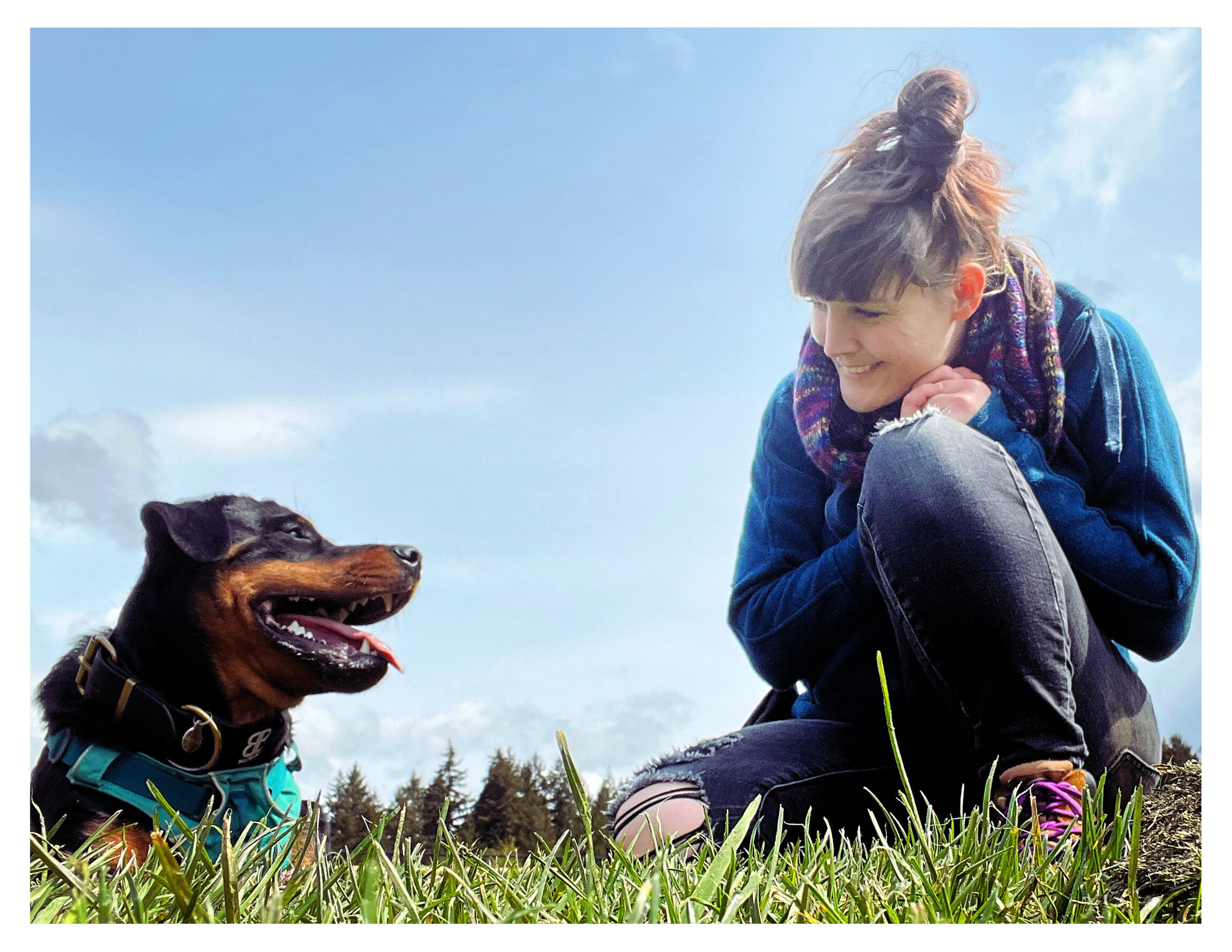Listen to your dog!
by Claire Anderson, FDM, CSAP-BC, CPDT-KA
Dogs communicate with us all the time, but often in ways we don’t expect or fully understand. As humans, we tend to prioritize verbal communication, yet dogs rely on body language, vocalizations, and behavior to express their feelings and needs. As with any meaningful relationship in your life, learning to listen to your dog is essential. It also fosters a deeper bond, prevents maladaptive behavior, and ensures their overall well-being. Healthy relationships make life worth living—for you and your dog.
Understanding Canine Communication
Dogs speak in subtle and sometimes complex ways. A wagging tail doesn’t always mean happiness—its height, speed, and stiffness can indicate a multitude of feelings. Yawning may not mean your dog is tired; it could signal stress or discomfort. Understanding these nuances allows us to interpret their needs correctly.
Some examples—there are many:
Whole body posture: A relaxed, loose stance indicates comfort, while a stiff or crouched posture can signal fear or uncertainty.
Facial expressions: Whale eyes (showing the whites of their eyes), lip licking, or a furrowed brow can be signs of anxiety or unease.
Vocalizations: Barking, whining, growling, or sighing each serve different purposes, from expressing frustration to seeking connection or warning of discomfort.
Responding to Your Dog’s Needs
Listening is only the first step—how you respond is equally important. When a dog expresses fear or discomfort, getting frustrated and punishing them or disregarding them for reacting will only heighten their stress. Instead, acknowledge their feelings and support them in whatever way they need to help them feel safe and confident.
Practical ways to respond include:
Providing space: If your dog moves away from a situation, don’t force them to stay. Respect their boundaries. Listen to their needs.
Meeting basic needs: Ensure they have adequate food, water, social support, exercise, mental stimulation, and rest.
Building trust: Reward frequently and provide consistent, clear guidance to help them feel secure. Provide clear and consistent boundaries when needed.
Prioritize play and time spent together: Spend quality time together playing, snuggling, training, or just experiencing the world together. Trust is built in the quiet moments.
Seeking professional help: If your dog is displaying signs of chronic stress or fear, consulting a qualified canine behavior specialist can make a world of difference.
Strengthening Your Bond
A dog that feels heard and understood is set up to be a happy, well-adjusted companion. When you consistently acknowledge and respond to their needs, your relationship deepens, and your dog learns to trust you. This trust leads to a more harmonious relationship and a fulfilling companionship for both of you.
Listening to your dog isn’t just about understanding their behavior—it’s about respecting them as sentient beings with emotions and needs. By becoming more attuned to their language, you create a safer, happier environment where both you and your dog thrive together.
How are you listening to your dog today? How are you responding? How does it feel?



